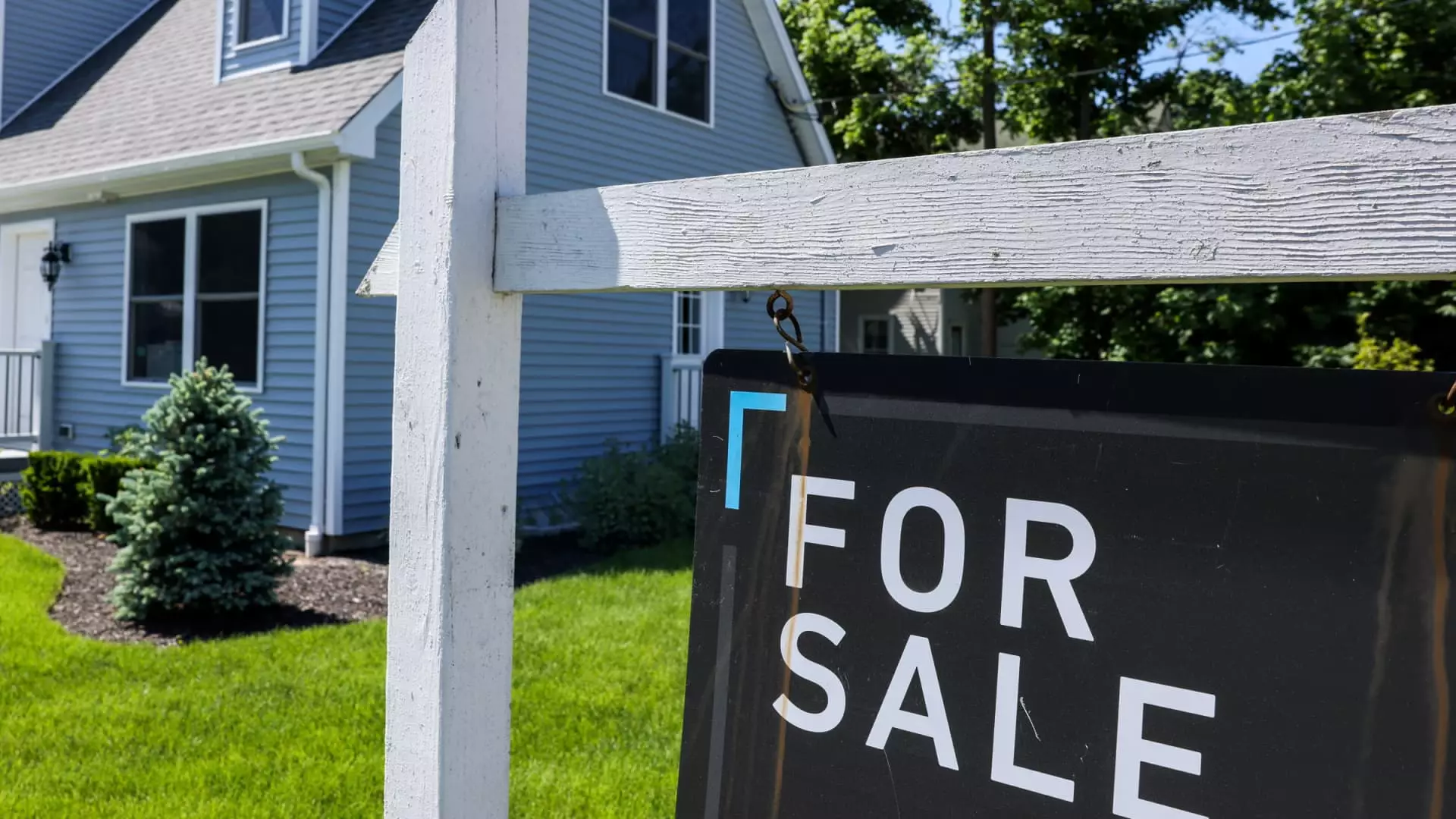In an unexpected twist, financial market volatility has triggered a significant drop in mortgage interest rates, sparking a remarkable surge in mortgage applications. The Mortgage Bankers Association recently reported a staggering 20% increase in total mortgage application volume, marking the highest activity level since September 2024. This uptick reflects the responsive nature of borrowers amid fluctuating economic conditions, showcasing how interconnected and fragile our financial system remains.
Understanding the Mechanics Behind the Rates
The average interest rate for 30-year fixed-rate mortgages, specifically for conforming loans under $806,500, dipped to 6.61%, a noteworthy drop from the previous week’s 6.70%. This reduction, although seemingly minor, reveals essential insights into borrower behavior. For homeowners locked into higher rates, this slight dip serves as an invitation to reassess their mortgage options. The increase in refinancing applications by 35% week-over-week and an astonishing 93% year-over-year underscores a palpable urgency among consumers, driven not only by lower rates but also by a desire to secure more favorable financial terms.
The inherent risk here is that such significant shifts in consumer behavior can be misleading. The pronounced increases are partially a reflection of the historically low volume of activity in the market. When the baseline is so low, even modest movements can generate outsized reactions, leading to misleading interpretations of market strength.
Undercurrents of Demand: Larger Loans and Rising Prices
Much of the recent demand has stemmed from borrowers seeking larger loans. Evidently, those in a position to take advantage of lower rates on larger sums stand to benefit the most from refinancing, illustrated by an average refinance loan size soaring to $399,600— just shy of setting a new record. Nonetheless, the revelation that demand for home purchases rose 9% despite escalating prices is a telling sign that buyers are undeterred by the daunting costs that come with home ownership in today’s climate.
Yet, lurking behind this surge in demand is a dual reality—higher prices persist even as listings increase, compelling borrowers to explore varying mortgage products, including adjustable-rate mortgages (ARMs). The shift in applications for ARMs, which jumped to 8.6% from 5.4%, reflects a strategic pivot as borrowers leverage perceived advantages of lower initial rates. The average contract rate for 5/1 ARMs dipping into the emotionally attractive 5% range is seducing many into accepting the risks associated with these products.
The Fragile Nature of the Market
However, this heightened demand may prove to be a fleeting phenomenon. As mortgage rates began to rise again at the beginning of the week—wiping out last week’s gains—many of these optimistic borrowers may find themselves caught in a tightening vice of fluctuating rates. Economic uncertainties, including potential tariff impacts, remind us that the mortgage market is anything but stable. As Matthew Graham from Mortgage News Daily succinctly noted, while the recent volatility may not be unprecedented, it underscores how susceptible we are to swift changes in market dynamics.
In a market fraught with unpredictability, understanding these complex interrelations becomes crucial for both prospective homeowners and industry professionals. The evolving mortgage landscape, shaped by both economic conditions and consumer behavior, demands our attention and scrutiny as we navigate through these turbulent waters.

